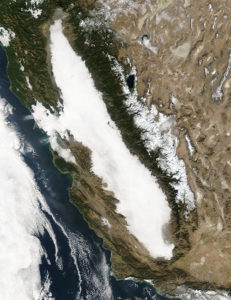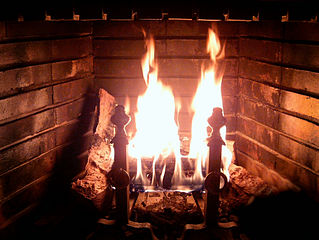Fog: It’s back.

To many, it’s one of those take-it-or-leave-it kinds of things. To others, they either like it or they don’t. With this group, there doesn’t appear to be any room for compromise.
If in the presence of fog when driving, it goes without saying, such has a tendency to make on-the-ground conditions for driving hazardous. And, what a lot of drivers as well as their passengers dread most about it. All the more reason that full autonomobility in the motor vehicle realm, if perfected, is something to definitely look forward to. Imagine a time when any single or multiple or chain-reaction motor vehicle incident becomes an impossibility all as a result of this technology being put in place. Now that would be something to write home about!
Now as to the type of fog what we’re talking about here is “pea-soup-thick” dense where visibility is at most 100 feet, no matter the direction – even up. Such is a cold-weather phenomenon. Meanwhile, in California’s San Joaquin Valley, where once plentiful, up until just recently, this fog type has been noticeably absent.
On the flip side of that same coin especially in the Valley and perhaps elsewhere, is the oftentimes pervasive (read: “omnipresent”), and at the same time, quite undesirable air quality. We’re talking fine particulate matter (PM2.5) pollution here.
So, in the Valley, wood-burning restrictions are in effect each year from Nov. 1st to Feb. 28th and for good reason. Depending on PM2.5 air concentration forecasted, this determines the type of restriction imposed. It could be that no restriction at all is imposed but this would, of course, depend on what the air quality forecast in a given area or county in the Valley is likely or expected to be.

Looking at Valley PM2.5 numbers, in November so far, preliminarily, there are a total of eight exceedances and they range from a low of 36.3 micrograms per cubic meter (μg/m3) on Nov. 12th to a high of 61.8 μg/m3 on Nov. 3rd. (The “San Joaquin Valley Air Basin Daily Average PM2.5 at Highest Site 2020” table between Nov. 1st and Nov. 21st from the California Environmental Protection Agency Air Resources Board was referenced). What remains to be seen is how the remainder of the month as well as all of December 2020 and all of January and February 2021 PM2.5 levels-wise, play out.
Meanwhile, in looking at one other fine particulate matter data set – “San Joaquin Valley Air Basin Annual PM2.5 Summary Data 2020,” for the “1-Day average” category, of the 35 monitoring sites listed, 23 showed totals above levels that are considered to be good or healthy. The “days above the national standard” ranged from a low of zero, to a high of 39. The latter was for S. Irwin Street in the community of Hanford which is located in Kings County.
And as to the fog’s significance, it aids in keeping airborne pollutants nearer to the ground where people breathe, and therein lies the problem.
And with that, the plan is to report back after Feb. 28th next year with an update.

Top image above: Jeff Schmaltz, NASA
This post was last revised on Nov. 23, 2020 @ 7:37 a.m. Pacific Standard Time.
Published by Alan Kandel
